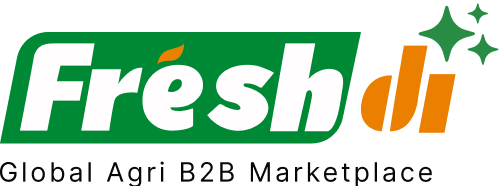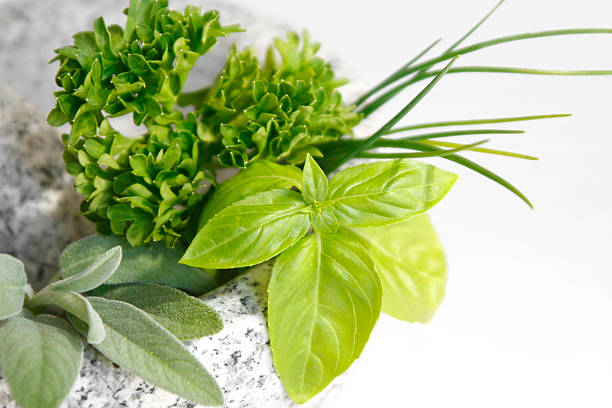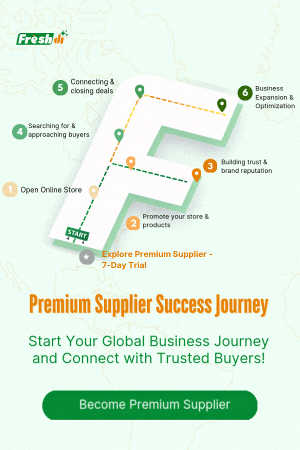Introduction – Current State of Play: The Herbs Sector in Poland
The herbs market in Poland is undergoing a dramatic transformation as we head into 2025. With consumer preferences shifting rapidly toward organic and locally sourced products, and Poland solidifying its role as a major herbs and spices hub in Eastern Europe, businesses are feeling the pressure to adapt—fast.
In 2025 alone, the Polish salt and spices market is expected to generate over $650 million in revenue, growing at a healthy 6.04% CAGR through 2030. That’s not just impressive; it’s a loud signal that demand is far from slowing down. Driving this trend are health-conscious consumers who want natural ingredients, especially herbs, in everything from teas and supplements to plant-based meals.
But it’s not just about demand. Poland’s agri-food exports hit a record €53.5 billion in 2024, a 2.7% jump from the previous year, indicating strong momentum in cross-border trade. Add to this the country’s 20,000-tonne annual herb imports from developing nations, and you’ve got a nation that’s both buying and selling at scale.
Meanwhile, weather volatility caused by global El Niño patterns is disrupting herb growth cycles, and policy shifts like closer Ukraine-Poland trade alignment are reshaping the supply chain landscape.
In such a fast-moving environment, staying informed isn’t optional—it’s essential. That’s where platforms like Freshdi come in, offering real-time supplier data, RFQ (Request for Quotation) trends, and buyer reviews that help businesses make confident sourcing decisions.
Deep Dive – Market Movers: Recent Developments and Consequences
Let’s break down some of the key developments transforming the herbs market in Poland:
-
Consumer Shifts to Organic: Shoppers are no longer just buying what’s cheapest—they want herbs that are natural, organic, and traceable. This trend is pushing suppliers to clean up their sourcing and production methods.
-
Exploding Cold Chain Logistics: Poland’s cold chain logistics market is booming—expected to grow from $3.30 billion in 2025 to $5.47 billion by 2030. Why does this matter? Fresh herbs are perishable. Strong logistics ensure that quality is maintained from farm to fork.
-
Disrupted Growth Cycles: Thanks to unusual weather patterns, herb yields may fluctuate. Persistent rains and humidity are making it harder for farmers to deliver consistent quality, which could lead to supply shortages—or price hikes.
-
Trade Realignments: Poland and Ukraine are syncing up on agricultural policies, potentially opening up new opportunities for sourcing and shipping herbs across borders.
All of this means one thing: the landscape is shifting fast, and the smartest players are those who can pivot with it.
Top 9 Verified Herbs Suppliers in Poland – Navigating Current Market Realities
These suppliers have been selected based on their verified export history, certifications, global reach, and positive reviews on platforms like Freshdi. They’re active players in today’s market, not outdated names from yesterday’s directories.
1. Natalia-Przyprawy
A trusted Polish supplier offering a wide range of culinary herbs and spices. Known for their commitment to quality and traceability, Natalia-Przyprawy is particularly favored by organic and health-focused buyers.
2. LARO SP Z O.O. SP.K
While best known for their herbal-flavored snack products, LARO also supplies bulk herbs. Their innovative product applications make them a go-to for brands looking to diversify flavor profiles.
3. Herbapol Lublin S.A.
One of the oldest and most recognized herbal product manufacturers in Poland, focusing on teas, tinctures, and dry herbs. They’re heavily involved in both domestic and export markets.
4. Dary Natury
Specializing in certified organic herbs, Dary Natury emphasizes biodiversity and sustainability. Their wide product range includes dried herbs, teas, and herb-infused food items.
5. Kawon-Hurt Nowak Sp. J.
A pharmaceutical and culinary herbs specialist, Kawon-Hurt supplies GMP-certified herbal products and has a long-standing reputation in European markets.
6. EkoHerba
Strong focus on wildcrafted herbs and forest botanicals. EkoHerba is gaining traction among buyers seeking unique, naturally sourced products.
7. Flos Lek
Though primarily known in the cosmetics industry, Flos Lek also supplies high-quality medicinal herbs for nutraceutical and wellness manufacturers.
8. Runoland Sp. z o.o.
Runoland produces organic foods and herbal products, including pickled herbs and herbal preserves. Their products are EU-certified and suitable for export.
9. PPHU Rafex
A dynamic supplier with a large catalog of herbs and spice blends, Rafex is known for its responsiveness and ability to handle large volumes efficiently.
Dynamic Ranking Note
Supplier performance can shift quickly based on trade volumes, seasonal availability, and buyer reviews. Platforms like Freshdi regularly update supplier rankings, highlighting “Suppliers of the Month” or “Top Verified Exporters” based on recent RFQ data and buyer interactions.
Market Navigation – Strategic Responses to The Prevailing Herbs Landscape in Poland
How should businesses respond to all this change?
Opportunities to Jump On
-
Organic is King: The organic herbs sector is booming. Polish consumers—and increasingly, European ones—are seeking clean-label products. Suppliers offering certified organic herbs have a clear edge.
-
Plant-Based Momentum: With Poland’s plant-based market crossing PLN 1 billion, herbs used in vegan and plant-based foods (like basil, oregano, and thyme) are in hot demand.
-
Export Leverage: Poland isn’t just a consumer—it’s a re-exporter. Buying from Poland means you’re tapping into a supply chain that’s already integrated with broader EU markets.
Risks and Hurdles
-
Regulatory Maze: EU standards are strict. Smaller producers may struggle to meet documentation and traceability requirements. This slows down onboarding and increases risk.
-
Inconsistent Quality: Not all herbs are created equal. Variability in potency and adulteration are real problems. Buyers need to vet suppliers carefully, ideally through platforms like Freshdi that offer track records and buyer reviews.
-
Logistics Bottlenecks: Even with an expanding cold chain, challenges remain in ensuring swift delivery across Poland’s rural regions. This can affect freshness and shelf life.
Sourcing Strategies That Work in 2025
-
Diversify Import Sources: Many Polish suppliers import raw herbs from Vietnam, China, and Brazil. Understanding the origin of the herbs—even when buying from Polish suppliers—is key.
-
Focus on Local Cultivation: Some forward-thinking companies are investing in local herb farms to reduce reliance on imports—a move that aligns with consumer demand for “Made in Poland” labels.
-
Insist on Certifications: Whether it’s HACCP, ISO, or EU Organic, certifications are becoming non-negotiable. They not only ensure quality but also ease customs clearance and retail onboarding.
Short-Term Outlook
Growth rates in the Polish herbs market are expected to range from 7.23% in 2025 to 12.42% by 2029. That’s steep—and it means more competition, more innovation, and higher buyer expectations.
Emerging News to Watch
-
Medical Cannabis Boom: Poland has nearly doubled medical cannabis import limits for 2024. Though separate from culinary herbs, this highlights growing acceptance of herbal medicine—which could spill over into wider herbal product demand.
-
Global Expansion: Polish herb companies like Greenvit are entering North America, signaling strong international competitiveness. This opens more partnership opportunities for global buyers.
Conclusion – Key Takeaways for Businesses in a Rapidly Evolving Market
If you’re sourcing herbs from Poland, 2025 is shaping up to be a year of both big opportunities and big challenges.
What’s changing?
– Consumer demand is shifting toward organic and plant-based.
– Poland is becoming a European herbs powerhouse.
– Climate and policy shifts are impacting supply chains.
What should you do?
– Vet suppliers carefully using platforms like Freshdi.
– Focus on certified, organic, and traceable products.
– Stay agile in the face of supply chain disruptions and regulatory changes.
How can Freshdi help?
Freshdi enables buyers to monitor real-time RFQ trends, verify suppliers through buyer reviews, and respond quickly to shifting market conditions. Whether you need to pivot suppliers due to weather disruptions or spot a new sourcing trend, Freshdi is your radar in the herbs market.
Key Takeaways
- Poland’s herbs market is growing rapidly, especially in the organic and plant-based sectors.
- Verified suppliers like Natalia-Przyprawy and LARO SP Z O.O. SP.K are key players to watch.
- Weather and policy shifts are disrupting supply chains but also opening new trade routes.
- Quality control, certification, and logistics are now critical to success.
- Use platforms like Freshdi to stay ahead of market trends and make smart sourcing decisions.
Buyer’s Checklist for Sourcing Herbs in Poland (2025)
- ✅ Prioritize certified organic and EU-compliant suppliers
- ✅ Use Freshdi to compare supplier ratings and RFQ trends
- ✅ Verify cold chain logistics capabilities
- ✅ Ask for recent lab tests or COAs (Certificates of Analysis)
- ✅ Confirm country of origin for imported herbs
- ✅ Stay updated on policy changes affecting imports and exports
- ✅ Diversify your sourcing base to mitigate climate-related risks
- ✅ Align your sourcing strategy with plant-based food trends
Future Outlook
Poland’s herbs market will continue to evolve with growing consumer awareness, technological innovations in agriculture, and stronger international trade ties. As the market becomes more competitive, the winners will be those who can blend agility with reliability, and data with action.
Digital platforms like Freshdi are set to play a pivotal role in empowering buyers to navigate this evolving space. Whether it’s through real-time supplier verification or market insights, Freshdi keeps you one step ahead.
FAQs
1. Why is Poland becoming a major hub for herbs?
Poland has a strong agricultural base, increasing exports, and a strategic location in Eastern Europe. It also imports from developing countries and re-exports across Europe, making it central to the regional herbs trade.
2. What types of herbs are most in demand in 2025?
Organic herbs like basil, thyme, oregano, and mint are in high demand, especially in plant-based and health products. Medicinal herbs are also gaining traction due to rising wellness trends.
3. How can I ensure the quality of herbs from Polish suppliers?
Use platforms like Freshdi to check supplier certifications, buyer reviews, and RFQ history. Also, request lab reports and product samples before committing to large orders.
4. Are there risks due to weather conditions?
Yes. Climate anomalies like El Niño are disrupting herb growth and affecting supply consistency. Diversify sourcing and monitor weather-related news for proactive adjustments.
5. What is Freshdi, and how does it help?
Freshdi is a B2B platform that provides verified supplier data, real-time RFQ trends, and market insights. It helps buyers make informed sourcing decisions and navigate fast-changing market conditions.
References
- Statista – Poland Spices Market Outlook
- 6WResearch – Poland Herbs and Spices Market Report
- CBI – Demand for Spices and Herbs in Europe
- Poland Insight – Agri-food Trade Growth
- Mordor Intelligence – Cold Chain Logistics in Poland
- Hortidaily – Fresh Herb Market Weather Challenges
- Tridge – Poland-Ukraine Agricultural Collaboration
- Business of Cannabis – Poland Cannabis Import Changes
- Nutraceuticals World – Polish Supplier Expansion


